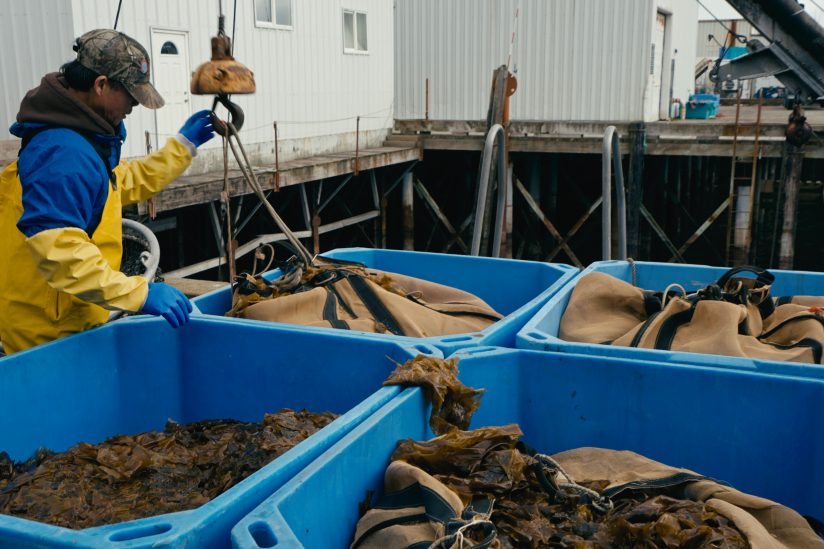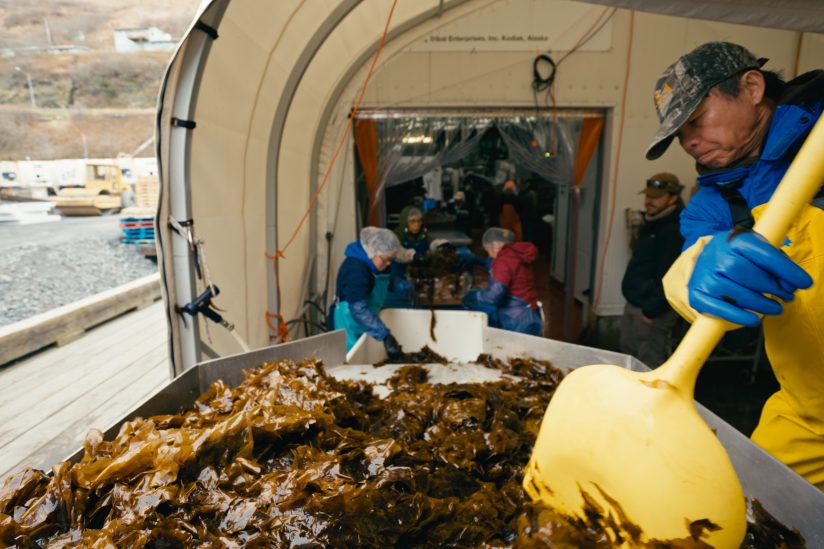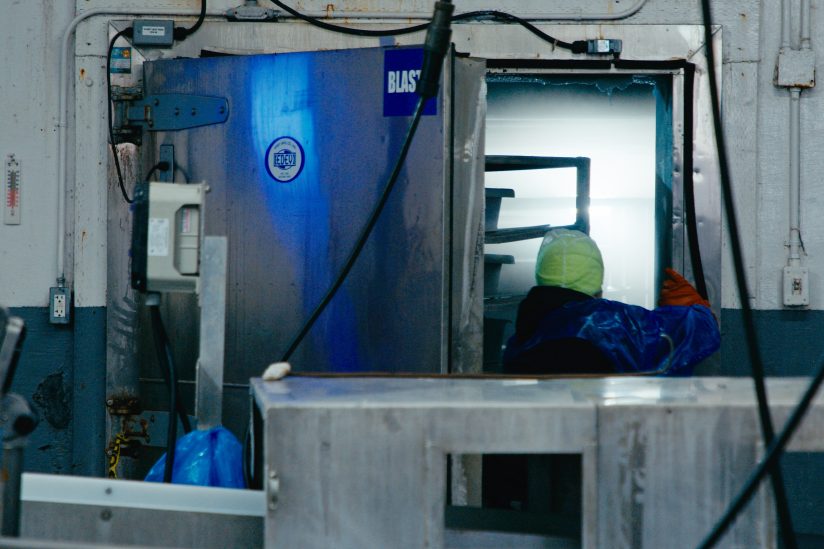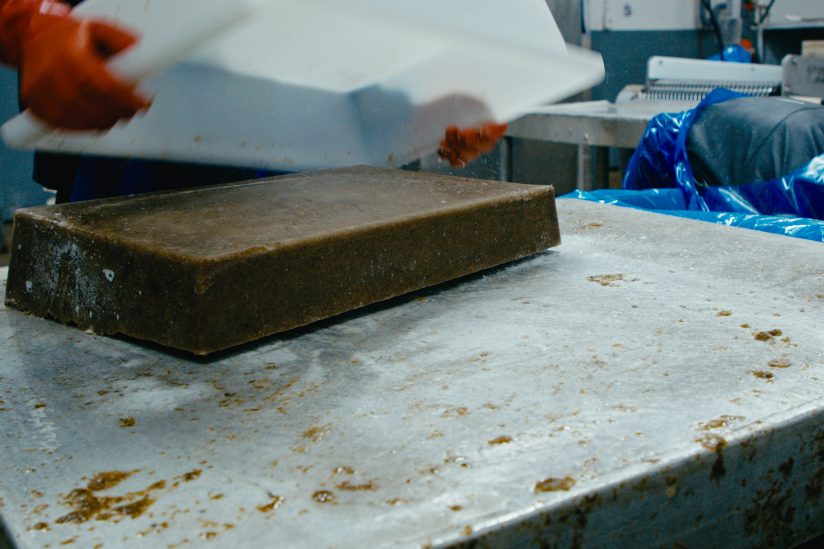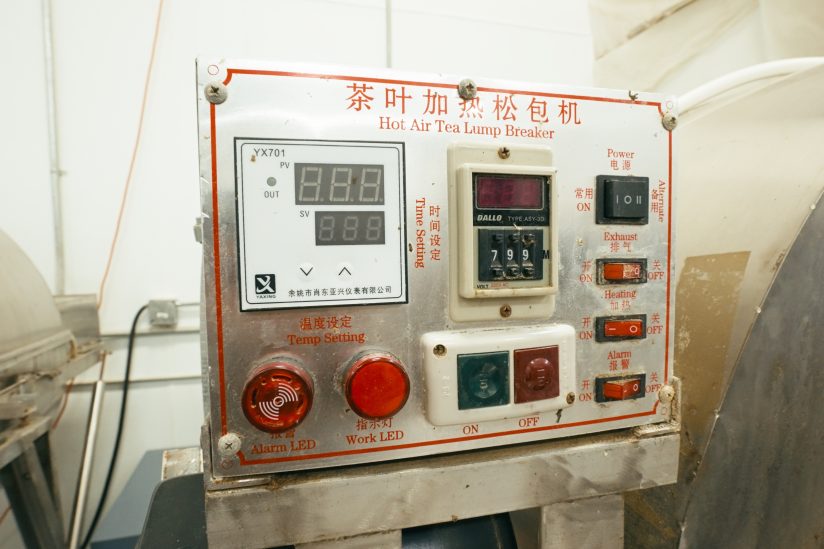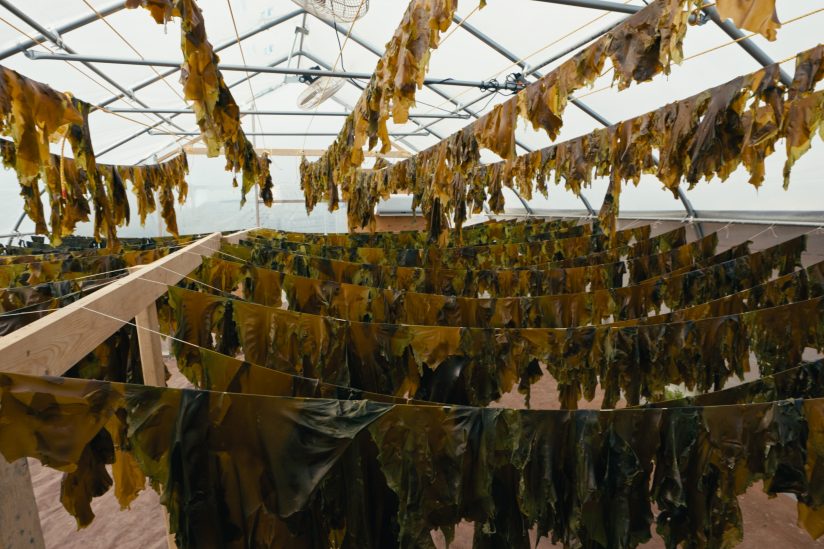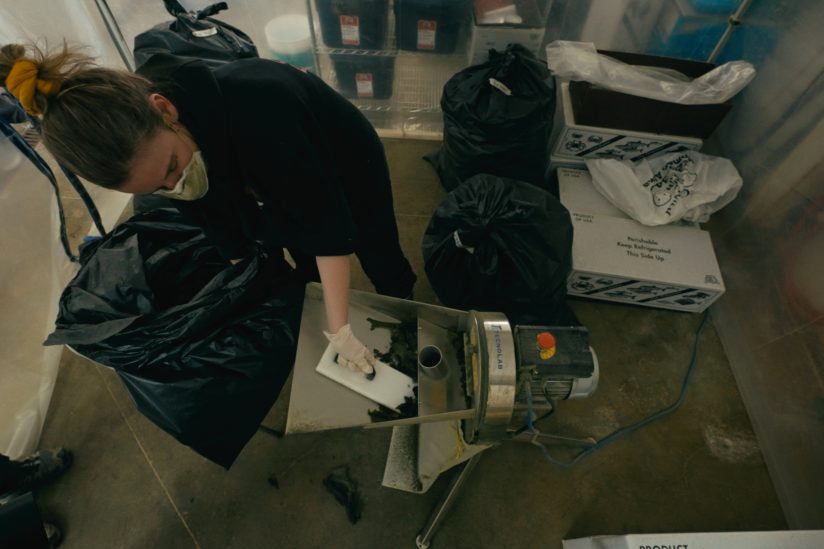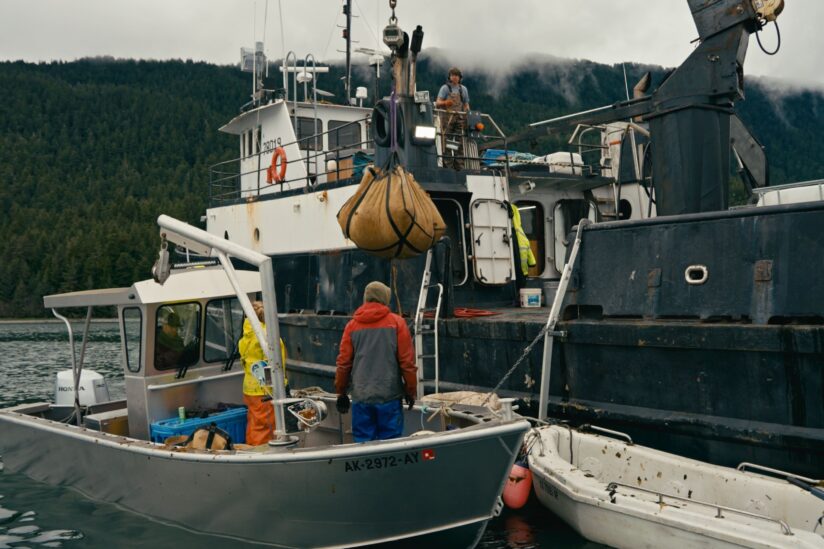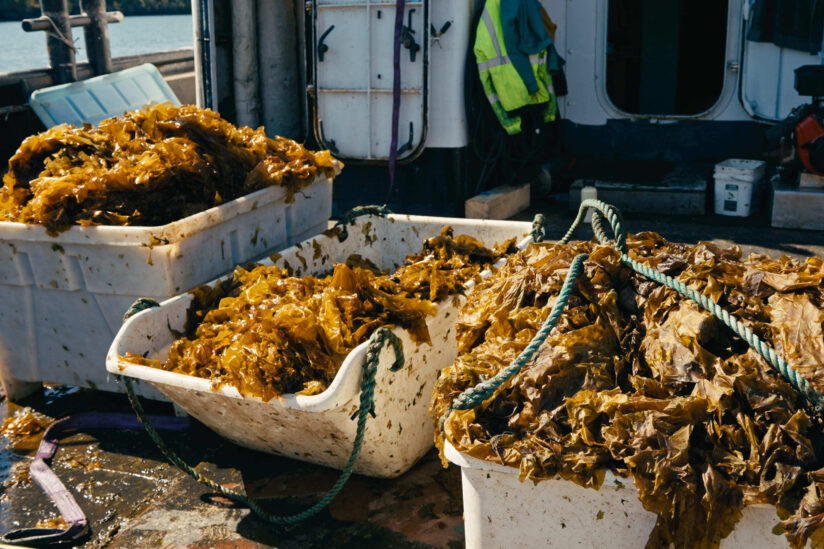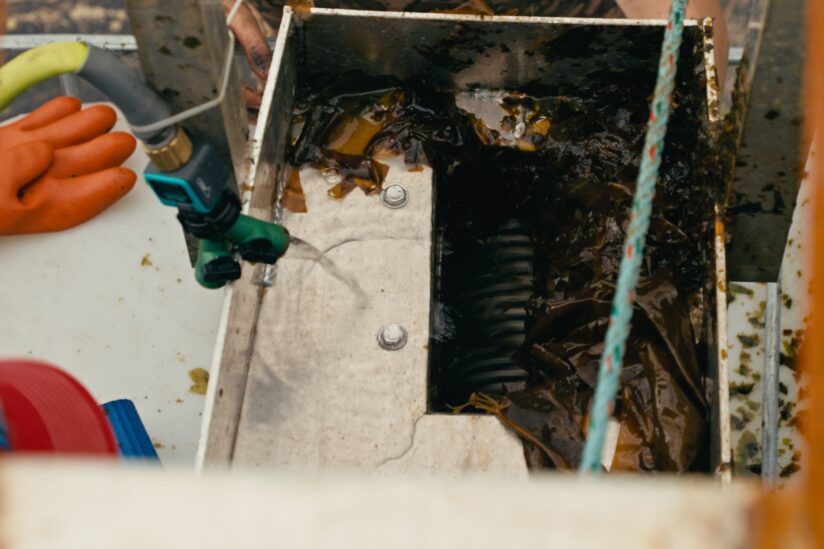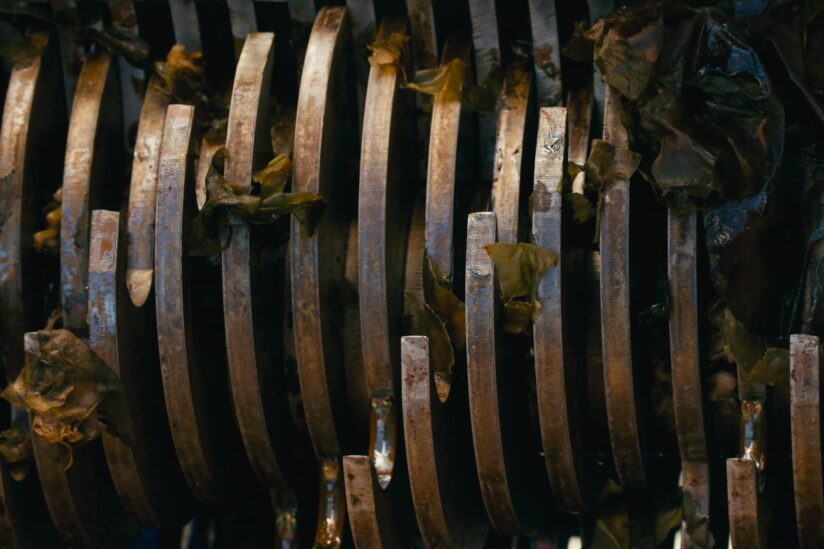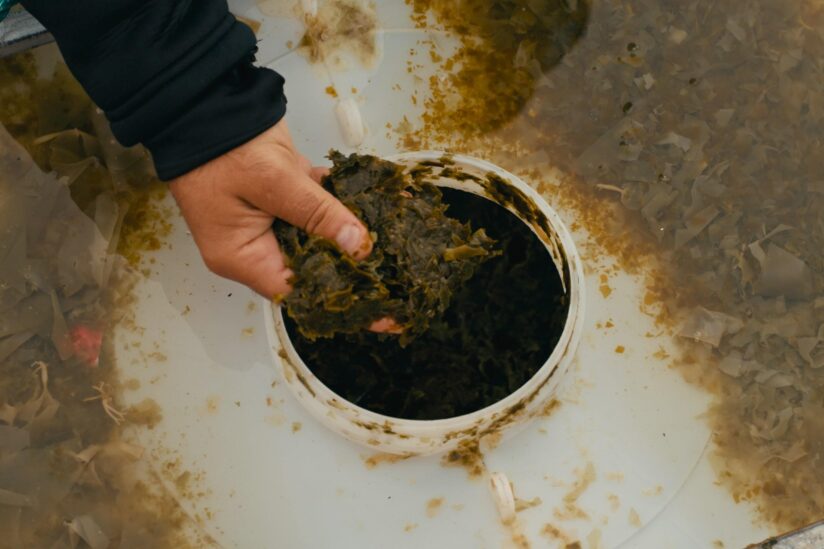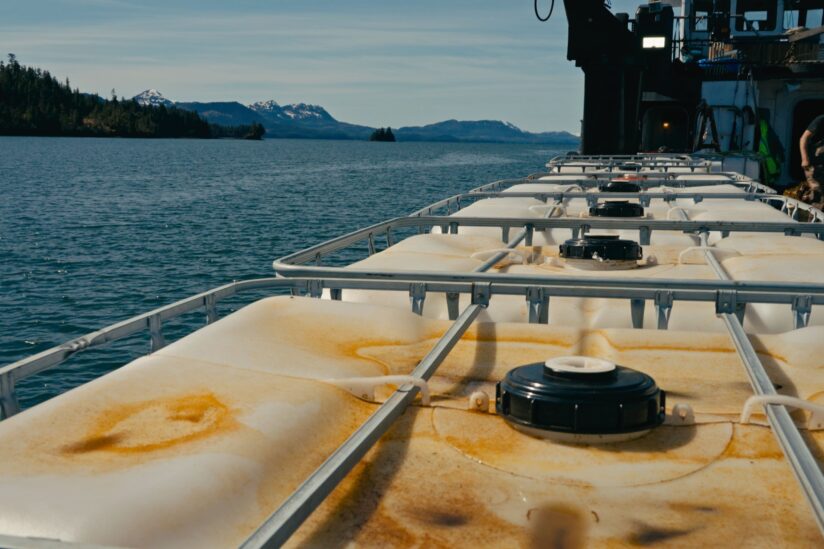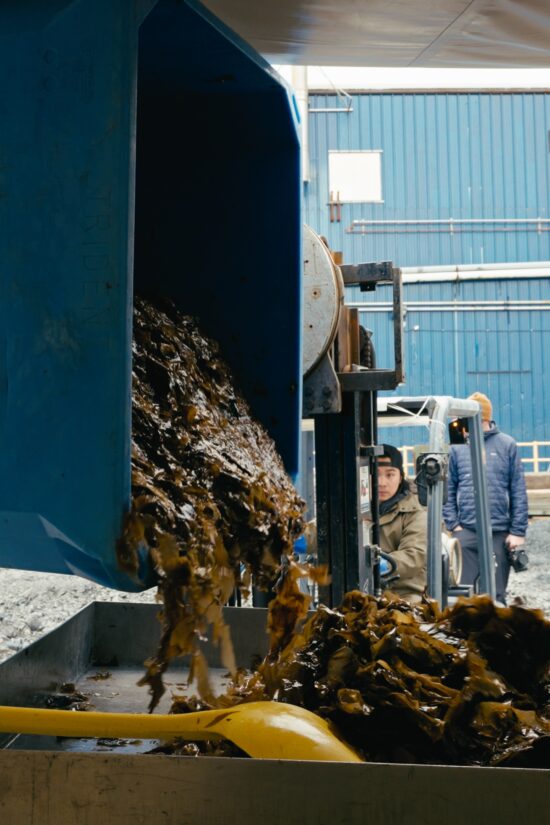
Kelp species are typically harvested in a short period during the spring months, creating a processing bottleneck for the farmers. After dehydration and cutting, most of the biomass is frozen. As drying techniques become more common and new technologies and innovations emerge worldwide, various initiatives and organizations are assisting Alaskan farmers and processors in implementing and integrating efficient drying capacities.
Dry kelp generally weighs about one-tenth of the harvested biomass. It's important to note that exact conversion ratios can vary significantly across harvests, regions, and processing methods.
Alaskan kelp farmers must be adaptable and responsive to the natural elements, carefully scheduling their harvests to ensure the highest quality product reaches the processing facility
Post-harvest handling refers to the crucial steps in stabilizing seaweed and getting it ready for sale, ensuring it reaches the market in the best condition possible. Farmers often consider this stage the most significant bottleneck in the value chain.
Processing steps include:
Rinsing and trimming
Farmers ensure their harvest is clean by dunking the sections of the growline closest to the boat back into the water before hauling it in, rinsing off loose sediment or biofouling. Alternatively, farmers may use a deck hose to spray down the kelp as it's brought aboard, helping maintain the harvest's quality and cleanliness.
Inspection
After rinsing, the seaweed is inspected on a belt, either on the boat or in the processing facility.
Grinding/shredding
To process seaweed most effectively, it is often ground or shredded before it is stabilized. This can either be done on land in a processing facility or on the water.
As soon as you take the seaweed out of the water, it immediately starts to degrade. You've got 12 to 24 hours to get it into a stable format before it starts to lose value quite precipitously.
GreenWave has developed a tool that allows for grinding the kelp on the boat with a spinner. The ground kelp is then transported into tote bags, which allows for more efficiency on deck and in the processing facilities, ensuring that the seaweed is stabilized. Mother of Millions uses a similar processing method, and the sizes can be adjusted to the consumer's preferences.
A commonly used technique for stabilizing seaweed is blast freezing, which is widely available in Alaska. The seaweed is placed in plastic trays and then in blast freezers, commonly used for fish processing. The seaweed can be frozen whole or after grinding.
Our farm and this handling process is 100% organic certified.
The processing facilities can be used for various seafood functions, as kelp is only processed in April and May. This is a win-win situation for seaweed farmers in Alaska because the permits already exist, many of the equipment and requirements, such as HACCP, have been taken care of, and they can drive the costs down.
Drying
Drying is one of the biggest challenges for kelp farmers worldwide, as kelp is 90% water. Currently, Alaska has limited drying capacity and kelp is difficult and expensive to process.
Milling
After drying, the seaweed is often milled to suit different use cases, such as shipping or product development. Both Ebbtide and Barnacle use the same milling machine.
Mobile Processing: A vessel on-site based approach to kelp harvesting and primary processing
Case study Mothers of Millions LLCMothers of Millions presents a solid track record of innovation – converting fishing vessels into a fleet of flexible, mobile kelp hatching, harvesting, and processing systems designed to meet the unpredictable realities of on-site harvesting. The company’s strategy focuses on conducting as many processing steps as possible on the vessel itself, directly on the farm site, usually for multiple farms in the same region. This method aims to streamline logistics, reduce transportation hurdles, and provide a more agile solution for farmers and buyers.
Innovations & approach
Notable features
- Logistics Advantage: The vessel's large capacity allows it to hold the equivalent of six to eight truckloads of material, enabling the company to harvest multiple farms and transport the product in a single trip, potentially below deck. This reduces logistical hurdles and can lead to significant cost savings.
- Organic Certification: The company is organically certified for various processing activities, including drying, freezing, shredding, and fermentation. It also has a DEC-certified kitchen on board, allowing it to produce smaller-scale, higher-value-added products during travel days.
- Trial and Error Philosophy: The business operates with a philosophy of continuous trial and error, constantly modifying its processes and equipment to find the most efficient solutions. This adaptability is key to their ability to work with different kelp types and farm setups.
Joint Innovation Projects
Part of the AMC’s Research and Development Grant Component.
Evaluating and sharing methods to efficiently dry kelp for rural communities
Barnacle Foods sought a cost-effective method for drying kelp on a small scale in remote coastal communities to enhance the growth of the mariculture industry and involve rural and Native communities. These communities face high energy costs, limited labor capacity, and market entry barriers.
Primary stabilization of seaweed using drying techniques
Blue Evolution, in collaboration with Sun'Aq Tribal Enterprises via Wildsource, is working to address the challenge of seaweed stabilization through drying. The project combines Blue Evolution's expertise in seaweed processing with Wildsource's seafood processing knowledge to optimize drying conditions and introduce high-quality seaweed products to the market. This innovative approach not only promises to enhance local economic development and job creation but also ensures sustainable seaweed production, paving the way for a new era in ocean crop cultivation.
